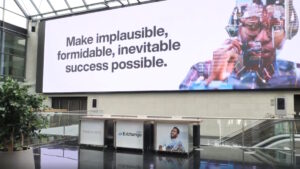We’re tired of the incessant focus on the role of the internet in the death of the high street stories that are constantly rolled out. So we’re taking a look at the other side of the story, the role digital technologies can and are playing in the rejuvenation of the high street experience. We’re talking to experts across the industry to understand and celebrate the role digital is playing in not killing but saving our high streets.
Manu Tyagi, Associate Partner, Retail and Consumer Goods at Infosys Consulting
Technological advancements and the shift to online shopping are often blamed for the so-called demise of the high street. But in reality, consumers are simply focused on finding the best combination of choice, convenience, price and, crucially for traditional retailers, experience.
To remain competitive, retailers need to focus on the in-store customer experience. If technology is harnessed in a way that works for consumers, it has the potential to protect high street retail rather than destabilise it.
The retailers that are thriving are those investing heavily in technology for personalisation, consumer targeting and effective loyalty management.
When technology works effectively alongside humans it can enable retailers to meet the changing needs of their customers, presenting new opportunities for retailers to track the consumer journey and understand their customers better. Ultimately, this increases revenue and margin growth — and ensures retailers retain all-important customer loyalty.
Balancing tech with tradition is key to beating the high street blues.
Retailers exploring new, innovative ways to draw consumers to the high street are the real winners — from personalised instore experiences featuring AR-powered smart mirrors and RFID-powered tables, to micro-targeting and gamification in the form of ‘aisle-hunting’ challenges that bring online and offline together to create innovative customer experiences.
Investing in new technologies using mobile apps, AR and physical spaces generates excitement around brands, especially for new launches or product ranges.
This not only creates memorable customer experiences, but it also helps drive more footfall to stores, and could help retailers claw back their dominance on UK high streets.
Leigh Moody, UK Managing Director at SOTI
While disruptive technologies such as augmented reality and drone delivery have been pegged as the future in the retail industry, experts agree that the technology that is changing retail is not the overhyped stuff of tomorrow, but the more mundane things that are happening today.
To succeed, rather than competing against the world of ecommerce, retailers should be adopting the right strategies to complement and accommodate changing shopping habits.
For the brick-and-mortar retailer, technology such as digital signage, kiosks and tablet scanners help shoppers find what they are looking for, while Mobile Point of Sale (mPOS) and self-checkout terminals make payment quick and easy.
Retailers must consider applying a mobile-first strategy across their entire on and offline operations to streamline the value chain, from supply to distribution to shop floor. Barcodes and RFID are key enabling technologies for warehouse management systems.
Knowing exactly where items are located and in what amount is essential when preparing for peak season trading and allows companies to shrink their inventory and increase product velocity through the supply chain.
Retailers should be offering personalised services, and mobilising retail staff through technology to streamline intelligent customer interactions. If store retailers want to remain competitive in today’s volatile climate, they need to be agile and adopt an integrated system that makes online to in-store transactions seamless.












